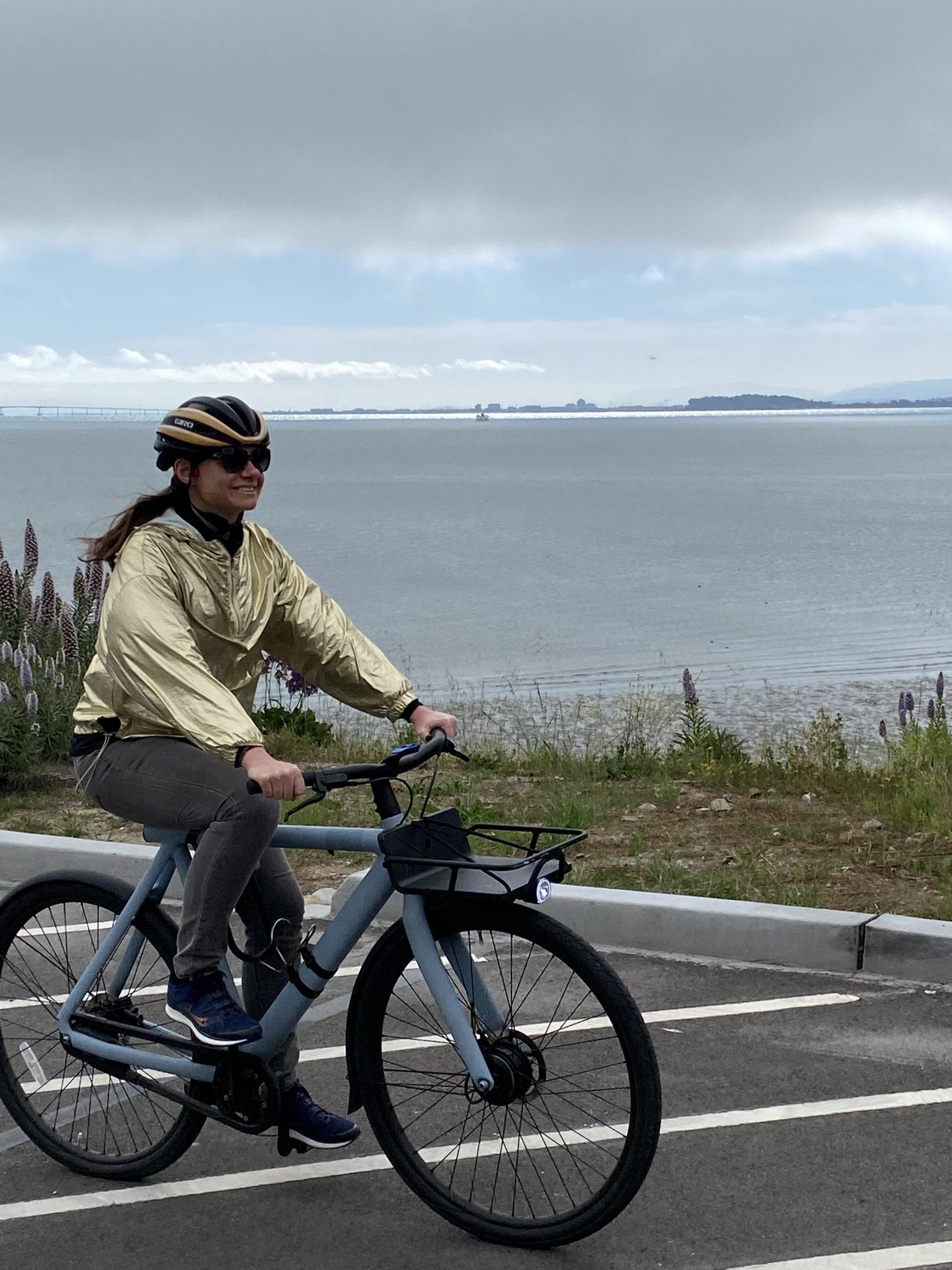
Photo courtesy of Genentech.
A series of music, food and fitness events are happening in San Francisco this week to welcome people back to the downtown area after two years of working from home.
However, will returning to the commute be just like riding a bike?
Transportation advocates hope so, given growing recognition that solo car commutes are culprits in worsening traffic congestion and greenhouse gas emissions. A new case study involving technology company Google shows how corporate employers can make bicycling as seamless a commute experience as cars.
The search giant began a pilot program in 2015 to encourage bike commuting to its two campuses in Mountain View and Sunnyvale, according to a March 9 Mineta Transportation Institute webinar about the “Effects of Bike Lending on Commuting to Work: The Google Case Study.” Google’s Bay Area offices begin a hybrid work week on April 4.
While local jurisdictions such as the City of Oakland offer bike lending programs, the concept is still evolving. But Google’s experience could help other employers to find their cycling cadence to better support employees and their commute needs in a tight U.S. labor market.
Google’s lending program “represents one of, if not the largest, employer-sponsored bike and e-bike lending programs in North America with over 1,000 bikes in its inventory,” according to the case study.
After surveying employees, Google executives determined a free lending program would help remove commute barriers related to bike ownership, maintenance, and perceived difficulty levels for workers more apt to drive. Traffic safety and travel times are other common hurdles.
The company piloted a lending program in 2015 with 500 e-bikes. It morphed into a permanent program the following year, adding 100 conventional bikes to its fleet. Google targeted solo drivers and required them to bike commute at least 60 percent of their workdays. Participants that didn’t comply with the time requirement were asked to return their bikes. To help team members build the habit, Google threw in free bike maintenance, a helmet, lock, lights, and emergency van pick-up or drop-off service.

Photo courtesy of Genentech
Taking electric and conventional bikes for a spin helped reduce approximately 2.4 single-occupancy vehicle (SOV) commute days per week, or about 400,000 total SOV commute miles, according to self-reported and smartphone-integrated travel data from Google employees between mid-2015 and 2019.
“We’re making it easy for them, which means we have ample parking, showers in the office, lockers where they can store personal items, and washing machines for anyone that might need to wash clothes in between rides,” said Lucy Noble, transportation demand management program manager at Google, during the webinar.
It also offered participants an e-bike subsidy — initially $300 and later increased to $500 — to purchase bikes after graduating from the six-month program. Other perks included local bike shop discounts and campus sales events.
Researchers at the UC Davis BicyclingPlus Research Collaborative and Mineta Transportation Institute worked with Google to review and analyze its bike commute data. Case study findings are based on information from 2,663 participants who provided trip stats for 224,415 total commute days. Data stops at the end of 2019 because the program was paused in 2020 and transitioned to support biking at home due to the pandemic.
Up until then, participants were required to log commute diaries during the six-month bike-lending term. Some also shared “before and after” data. However, those records weren’t mandatory, introducing potential bias differences that may be addressed as Google’s program develops.
Overall, the lending program contributed to bike commuting increases of approximately 1.7 to 2.3 days per week. Participants, on average, stepped up their bike distance during commutes between 8.4 to 10.5 miles per week.
“We think this evaluation is applicable to a lot of large employers around the county,” said Dillon Fitch, co-director at the BicyclingPlus Research Collaborative, during the webinar.
Before Google’s case study was published, biotechnology company Genentech began a 12-month e-bike commuter program with about 25 participants in August.
“The goal is to understand if a company-provided electric bike will replace single-occupancy vehicle commutes for employees who live within a 10-mile radius of Genentech’s South San Francisco campus,” said Andy Jefferson, senior director of transportation at Genentech.
Jefferson added that the feedback to date has been positive, but the program is still in the early stages.
The Google case study included ideas for data collection tweaks and policy recommendations. To improve accuracy, it could require participants to record other travel modes in addition to bicycling days, and explore different methods for collecting before and after data in the future.
Switching gears to policy, Google could consider a permanent program with no graduation and other “vehicle form factors” like e-scooters, cargo and folding bikes given the rapid growth in micro-mobility. Another priority could focus on ways to increase multi-modal bike commutes. It also may try to target non-bike commuters, who saw the most significant gains from the lending program.
“People really turned to bikes in huge numbers just for sanity, to get exercise, and be social” said Kurt Wallace, director at San Francisco-based Bikes Make Life Better, which designs and operates bicycle programs for large organizations. “Nobody wants to give that up just to return to the office.”
May 20 is the official “Bike to Work Day,” but transportation advocates encourage Bay Area residents to ride the entire month as part of “Bike to Wherever Days,” created to promote bike commuting and the importance of cycling for health and the environment.

